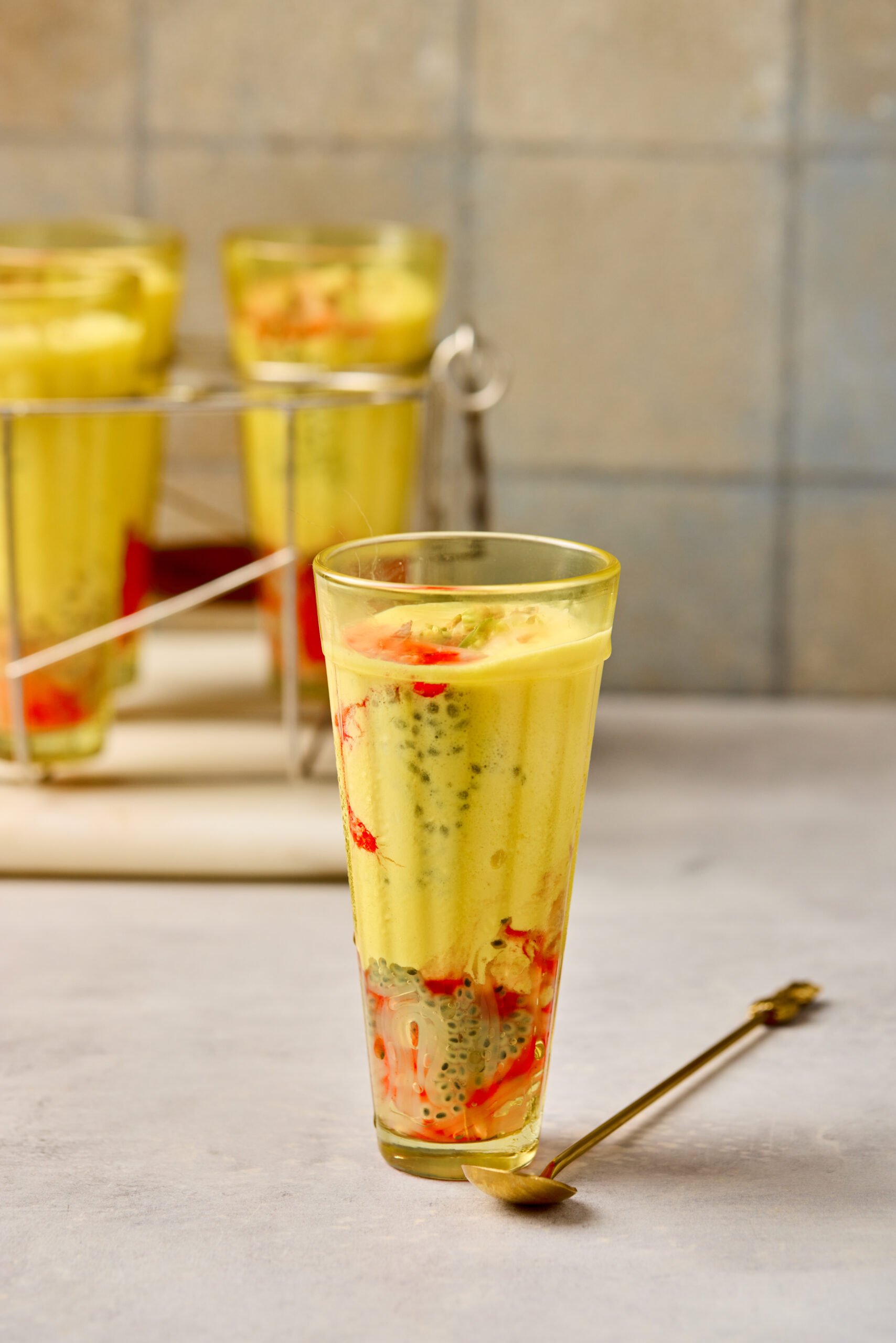
Falooda is one of India’s most playful summer treats, a layered dessert drink that’s just as fun to look at as it is to eat. Sweet rose milk, silky vermicelli, basil seeds, and a scoop of ice cream come together in a tall glass, with each spoonful offering a different mix of textures and flavors. The pink rose syrup against the white milk and ice cream gives it a festive, almost celebratory look.
The roots of this go back to Persian faloodeh, a frozen vermicelli dessert flavored with rose water that arrived in India during the Mughal era. Over time, it was adapted into the drink we know today: milk and basil seeds layered with vermicelli, nuts, and sometimes jelly, then finished with ice cream or kulfi. What started as a royal indulgence became a favorite at weddings, street stalls, and family gatherings across the country.
It’s the kind of dessert that feels cooling and rich at the same time; sweet, fragrant, and layered with enough texture to make every bite a little different.
Why you’ll love this
- A dessert and drink in one glass
- Cooling and refreshing for hot days
- Beautiful layers make it festive and eye-catching
- Customizable with fruits, jellies, or kulfi ice cream
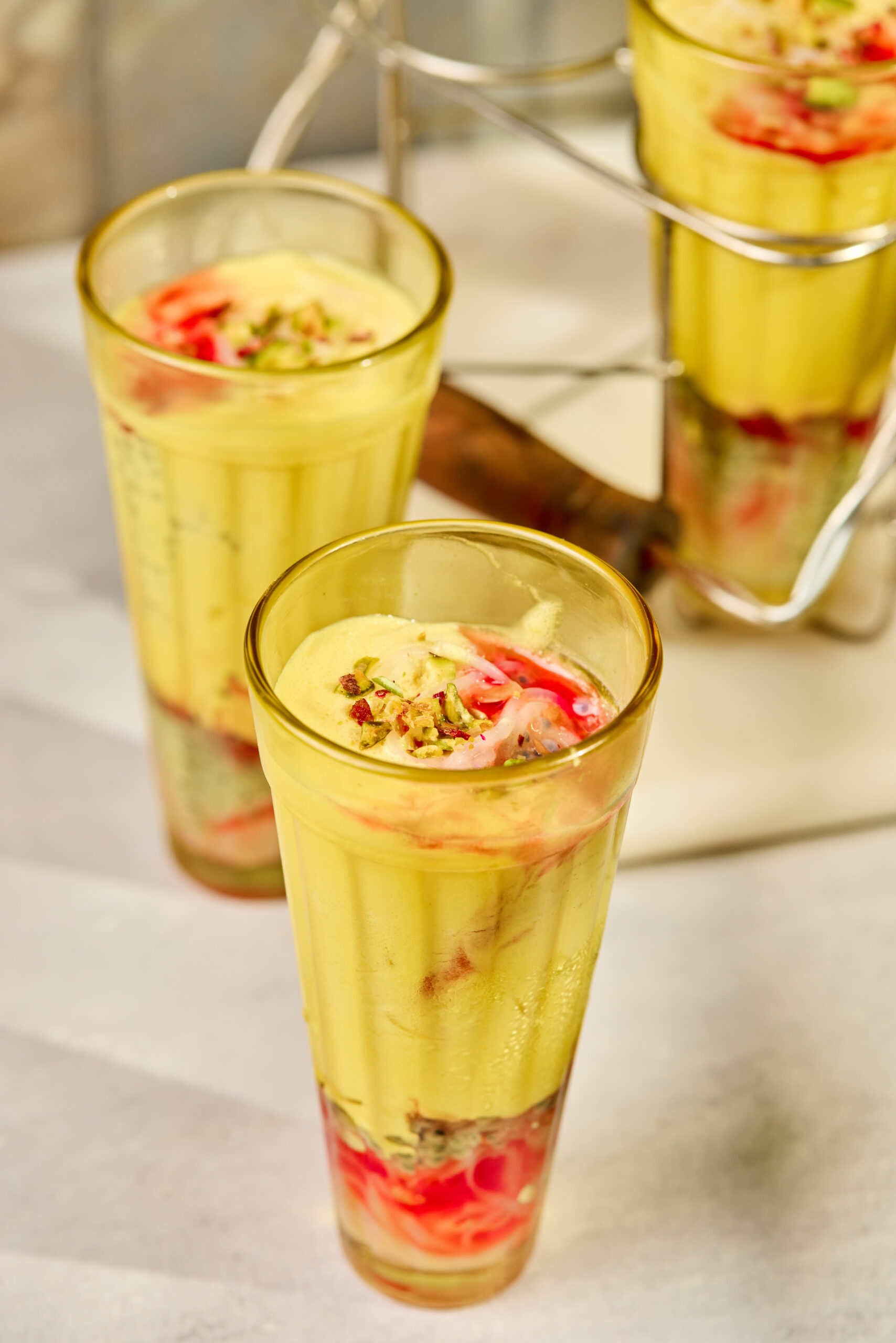
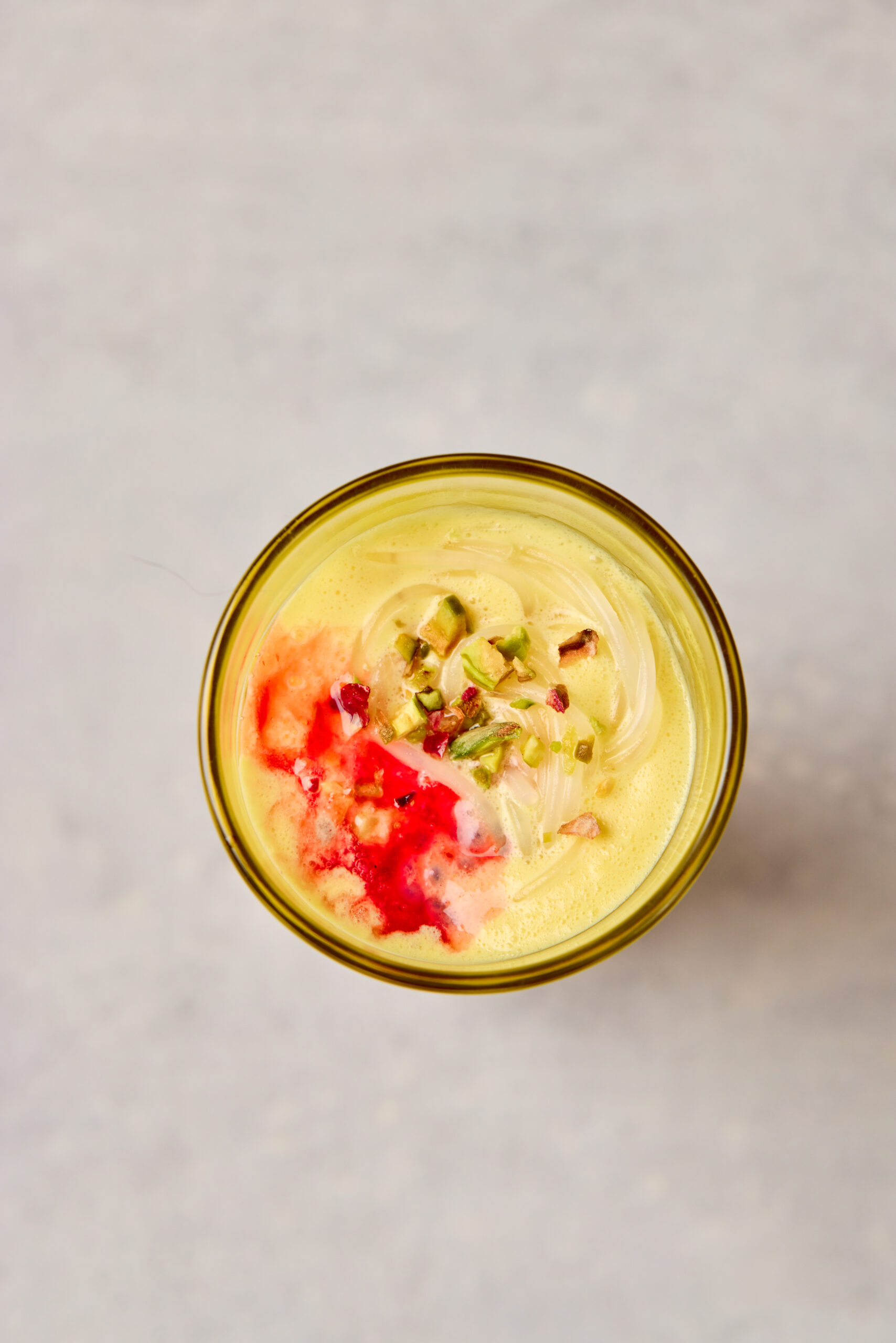
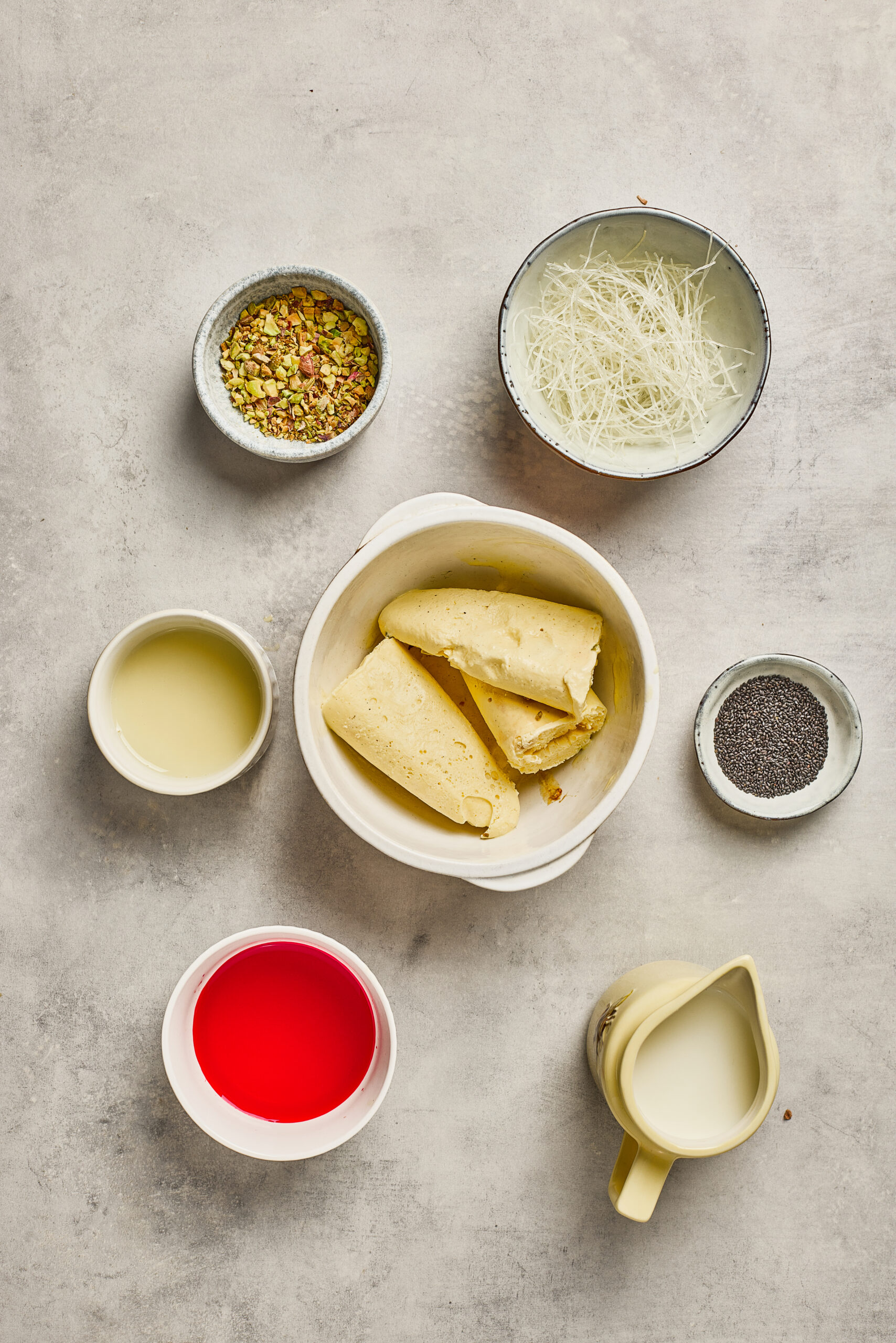
Falooda
Ingredients
- 25 g white falooda noodles
- 6 g basil seeds tukmaria
- 60 ml condensed milk
- 190 ml evaporated milk
- 35 ml rose syrup
- 200 g kulfi any flavor (about 4 small kulfi)
- 20 g pistachio nuts lightly crushed
Instructions
Method
Cook the Noodles:
- Break the falooda noodles into a few pieces.
- Cook according to the package instructions (usually boiling for 2–3 minutes).
- Drain, rinse with cold water, and set aside.
Soak the Noodles:
- Place the cooked noodles in a bowl of cold water for 10 minutes to stop them sticking.
- Drain well.
Prepare the Basil Seeds:
- Put the basil seeds in a small bowl.
- Add 2 tablespoons water.
- Leave for 15 minutes to soak and swell.
- Drain off any excess liquid.
Mix the Milk:
- In a jug, stir together the condensed milk and evaporated milk until smooth.
Assemble the Glasses:
- Take four tall glasses.
- Place about 1 heaped teaspoonful of noodles in each glass.
- Add a spoonful of the soaked basil seeds.
- Drizzle 1–2 teaspoons rose syrup into each glass.
- Pour over 60 ml of the milk mixture.
Add the Kulfi:
- Remove the kulfis from their moulds.
- Cut into bite-sized pieces.
- Add to the glasses.
Finish and Serve:
- Top each glass with extra noodles and basil seeds if you like.
- Sprinkle with crushed pistachios.
- Serve immediately with a long spoon and straw.
Notes
- Replace rose syrup with strawberry or mango syrup for a fruity twist.
- Use almond milk or coconut milk for a dairy-free version.
- Swap ice cream with kulfi for a richer, more traditional taste.
- Soak basil seeds in water for at least 10 minutes — they expand and add a cooling texture.
- Cook vermicelli until just soft; overcooked noodles can turn mushy in the drink.
- Chill the serving glasses before layering to keep the falooda extra cold.
- Rose milk-soaked basil seeds, and cooked vermicelli can be prepped up to 1 day in advance.
- Assemble the layers just before serving for best texture.
- Not suitable for freezing as the layers lose their structure.
- Top with chopped nuts, cherries, or fresh fruits for extra flavor.
- Serve in tall glasses with long spoons for a classic look.
- Add jelly cubes for a fun, colorful layer.
- Royal Falooda: Add saffron and rabri (thickened milk).
- Chocolate Falooda: Replace rose syrup with chocolate syrup.
- Fusion Falooda: Top with brownies or cookies for a modern dessert.
- Nutty Falooda: Mix in crushed pistachios or almonds for crunch.
Nutrition
FAQs
What is Falooda made of?
Falooda is made with rose syrup, milk, soaked basil seeds, vermicelli, and topped with ice cream. Variations may include jelly cubes, nuts, or fruits.
Is Falooda a drink or a dessert?
It is both — often called a dessert drink. Served in tall glasses, it can be sipped like a milkshake or eaten with a spoon.
Can I make Falooda vegan?
Yes, replace milk with almond or coconut milk and use dairy-free ice cream.
What’s the difference between Falooda and Faloodeh?
Faloodeh is a Persian frozen vermicelli dessert, while Falooda is its Indian adaptation with milk, rose syrup, basil seeds, and ice cream.
When is Falooda usually served?
Falooda (Refreshing Layered Indian Summer Drink) is a colorful blend of rose syrup, basil seeds, silky noodles, and kulfi or ice cream served in chilled milk. Sweet, creamy, and fragrant, it’s both a dessert and a drink, a refreshing treat that turns hot summer days into something festive and indulgent.
If you try this, let me know how it went in the comments. And if you enjoy Indian and Indian-inspired cooking, follow Beyond Chutney for more:


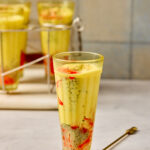
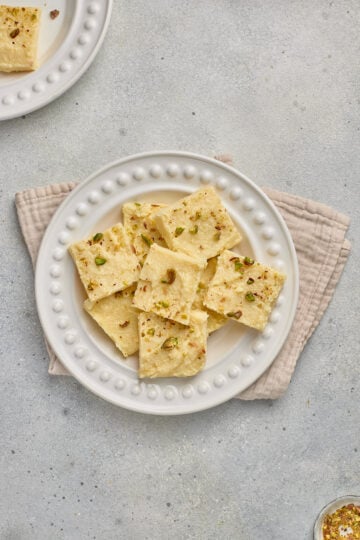
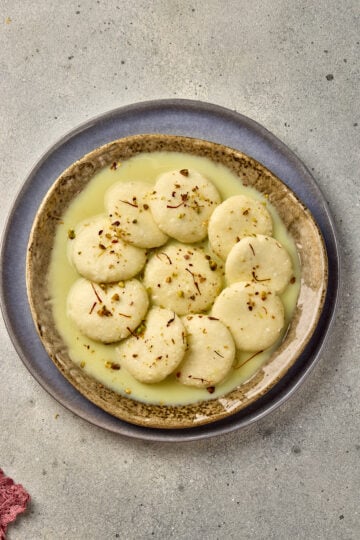
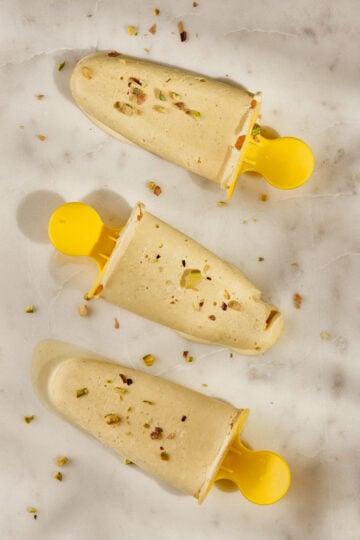
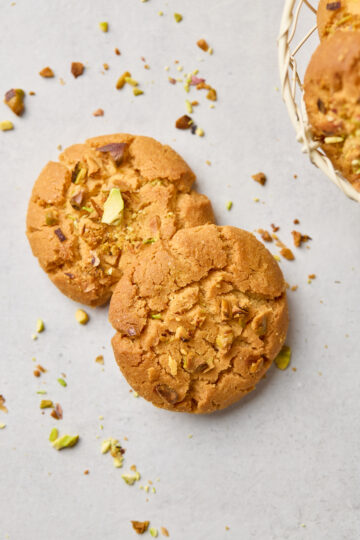
Have a question or something to share? Leave a comment below!